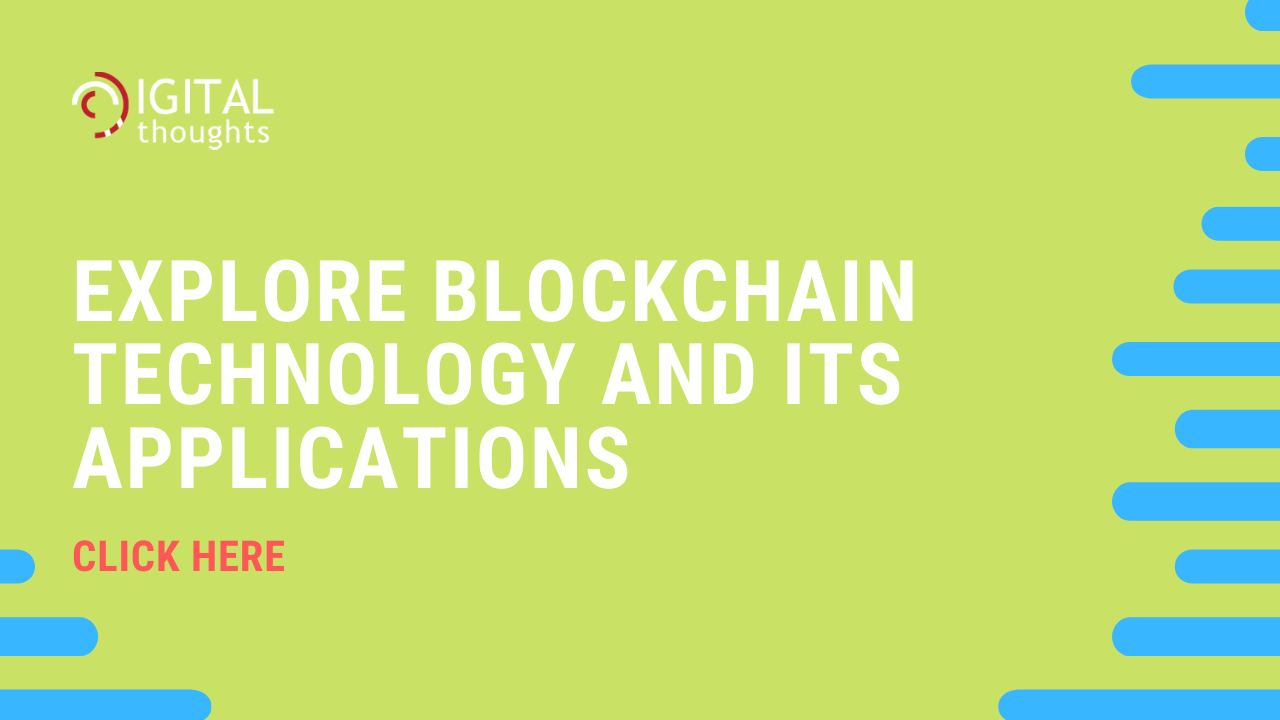Understanding Blockchain Technology and Its Applications

Blockchain is a term that has gained prominence in the last decade or so, with the emergence and growth of the Bitcoin network. Understanding the blockchain technology will not be that complex if we try to go to the basics. The word blockchain is literally composed of two words – block and chain. In the context of this technology, 'block' refers to the information stored in a digital format while the 'chain' refers to the database that is often open to the public.
Since blockchain technology is most commonly used to keep a record of transactions, it breaks the transactional information into three distinct categories – transaction details ( time, date, currency), information about the parties involved in the transaction, and some unique points about its transaction that can be used to distinguish between them.
Did You know? A single block has the capacity to store upto 1mb of data.
Understanding the Working of Blockchain
Blockchain is exactly what it's simple name sounds like - it's a chain of blocks that are connected to one another to form a chain. However, there are certain criteria that A block must live up to before it can link itself to the chain.
To begin with, A block must contain the data of one or multiple transactions. Yes, sometimes information of multiple transactions are grouped together to pack them into a single block. Secondly, it's important to note that only information of verified transactions count. After the block is created, it's given a hash before it can connect itself to the blockchain. Once the block is a part of the blockchain, it is open for public view. The following diagram illustrates how a blockchain is created.
Source: https://bit.ly/2S0Ei0R
Does that make you wonder how secure blockchain is? Well, you'll be surprised to know that the blockchain technology is one of the most secure ways to store and share information that is available today. It's a "Distributed ledger" which means information is not just present in a single location but in multiple locations.
Since the blockchain is public and can be accessed by anyone, millions of people across the globe connect the computers to the blockchain network and each computer becomes what is referred to as a "node". This updates a copy of the blockchain into each one of these millions of computers, and each copy is updated in real time whenever a new block is added to the blockchain. This is a technology that makes each computer a part of the network, making it next to impossible for hackers to get access to the information (as that would require a hacker to hack into each one of these million computers!). Another factor that adds to the security of the blockchain, is the fact that it's extremely difficult to edit the information on a block and impossible to delete a block once it has been added.
Hence, to ensure that only relevant information is added to the blockchain, blockchain networks often use some sort of test that one has to qualify in order to be eligible to add blocks to the blockchain. More often than not, these tests are very complex programming problems.
Did you know?While the blockchain is accessible to everyone, information about the users is often limited to this username or digital signature.
Real World Applications of Blockchain
Now that we have a basic understanding of how blockchain works, let us look at some of its applications in the real world.
1] Seamless Money Transfer
This is an application of blockchain technology that has by far the greatest potential. Blockchain technology is implemented successfully, they would be no requirement for banks to be a part of the picture and it will possible to transfer funds securely in a matter of seconds!
2] Management of Health Records
Managing health records involves handling enormous volumes of data and blockchain Technology can be really useful. Once a patient's medical record is generated and it's verified by the doctor, it can be added as a block to the blockchain. This will assure that the records can be accessed easily and at the same time, patients will have the confidence that their health records cannot be altered or deleted.
3]Keeping a Record of Supply Chains
Supply Chains are another domain that involves keeping track of large volumes of data, and so the blockchain technology can be useful here. The source of each material can be recorded in a blockchain format, which will make it easy for people to refer to when required. This technology can also be used to chart the path of food supplies from the source to the market.
4] Maintain Records in Real Estate Domain
Real estate records can often be complex, with a piece of property being handed over from one to another and so on, multiple times. Blockchain Technology can indeed make it much simpler than maintaining all of these records on paper. This way the entire process becomes a lot more transparent, and easy to refer to in case of a dispute.
A survey by Deloitte shows that 34% of businesses have already invested in a blockchain system, while another 41% are expected to do so within the next year.
Final Word
Thus, we see that the blockchain technology currently is not just limited to the Bitcoin world but is finding applications in the real world as well. The major advantages of blockchain Technology that work in its favour, are the high levels of accuracy, negligible threat from hackers, transparency, and the elimination of the need to verify the stored information at regular intervals. The future will witness blockchain making transactions more efficient and secure than ever before.
